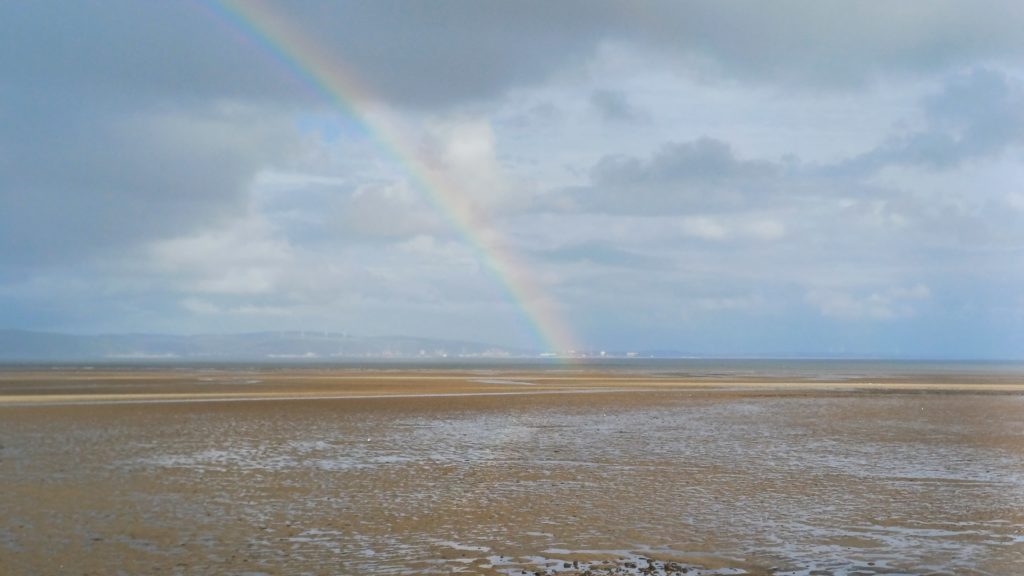This morning here was a rainbow over the sea; not the one in the photo, the one this morning was too faint to photograph, only dusty colours at the two ends before dissolving into the clouds.
At school we learnt that rainbow were due to the way light from the sun behind is bent as it enters tiny water droplets, bounces within the droplet and then comes back out1. The angles of entry and exit depend on refraction as the refractive indices of different colours vary slightly, there are different critical angles, hence the arcs of the rainbow.
If the water drops were not there, the sun’s light would strike the land behind the rainbow’s feet or in the upper parts simply fly past into the sky and then outer space. It was light never destined for us but borrowed from other people and other places. If there were no rainbows the earth would shine just a little more brightly for astronauts on the moon.
Behind the rainbow is blue sky. Again we were taught in school how the atmosphere scatters blue light, and this gives the sky its colour. Some of the light that would otherwise fall in other places, instead is diverted to us. Without this the sky away from the blinding sun would be black and star-spattered like night at noon.
Twilight is a magical time of things half seen and just before sunrise here is the exuberant awakening of the dawn chorus. In these in-between times, the sun is below the horizon and yet there is still glimmering light.
Our atmosphere is fragile and thin, less than 2% of the radius of the Earth, not so much like the skin of an orange as the coating of wax on its surface, or the tissue-thin layer of dried onion skin. The sliver of light from the sun that does not hit the earth, but skims the atmosphere is also partially scattered, lightening the sky when the sun is still hidden. Light that would be lost to the heavens, instead finding us.
We all live in borrowed light.
- See Meteorological Office explanation and video.[back]
